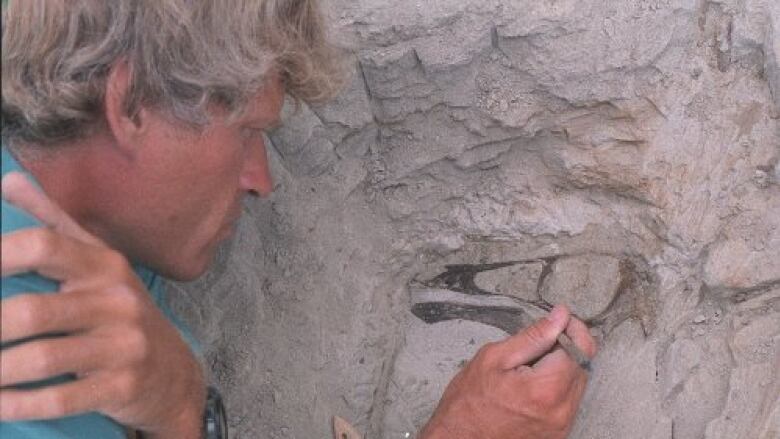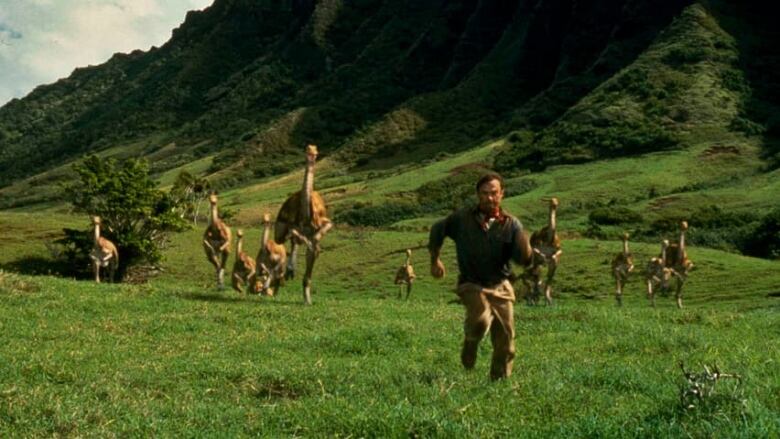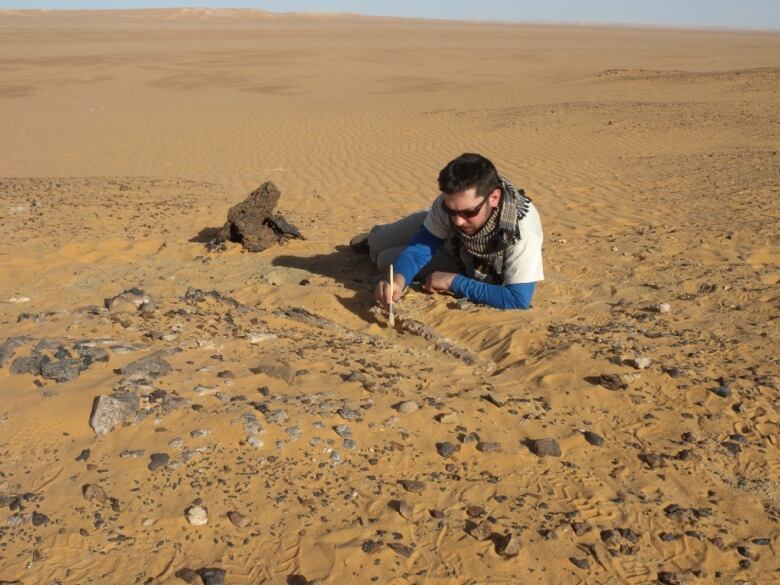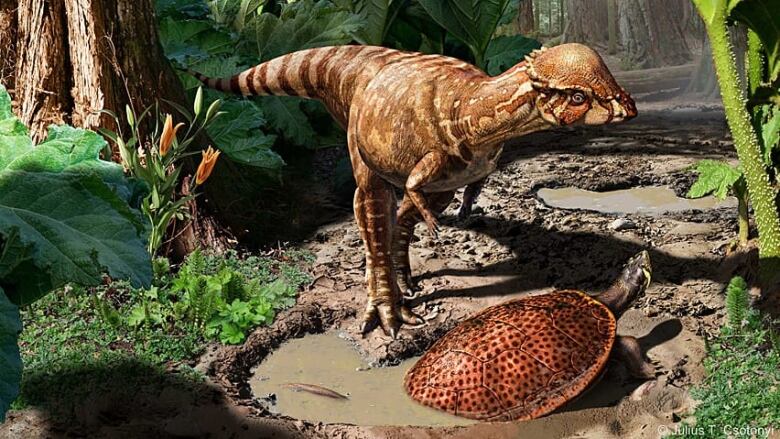New dinosaur finds soar in 'golden age' of discovery
Where are all these new dinosaur species coming from?

A parade of weird and wonderful dinosaurs have stomped and scampered into the scientific record this year. To name just a few, discoveries announced in 2014 include:
- Two massive Titanosaurs from Argentina, announced in May and September, vying for the title of biggest dinosaur ever found.
- Spinosaurus, the first known semi-aquatic dinosaur.
- A little Arctic tyrannosaur called Nanuqsaurus.
- The first feathered plant-eating dinosaur.
- Two new horned dinosaurs found in storage at a Canadian museum.
If new dinosaurs appear to be taking over the news, it isn't your imagination.
"Were really in a golden age,"says David Evans, Temerty Chair in Vertebrate Paleontologyat the Royal Ontario Museum in Toronto and an associate professor at the University of Toronto. "The rate at which we're discovering dinosaurs it hasn't been faster in probably close to the last century.
"It's incredible. We're finding a new dinosaur almost every two weeks we've named more dinosaurs in the last 20 years than in the previous 100."
Other paleontologists agree, and they have a variety of different takes on where all these new dinosaurs are coming from. Here are a just few of the reasons for the explosion in dino discoveries.
1. The 'Jurassic Park' effect
Tourists on safari peer out the window of a truckas a herdof lithe, ostrich-like dinosaurs runs past them whilestegosaurs on the bank of a river stare placidly at kayakers paddling toward them in the trailer for Jurassic World, released earlier this week by Universal Pictures.

Less than a day after being released online, the trailer had been viewed 11 million times the franchise is still a blockbuster.
"I think the popular interest in dinosaurs has really grown and I think that stems back to Jurassic Park in 1993," said Evans, referring to director Steven Spielbergs original movie, several sequels back. It was based on a novel by Michael Crichton about dinosaurs brought back to life by reconstructing their DNA.
Before Jurassic Park, dinosaurs had been portrayed in popular culture as slow, dim-witted, overgrown lizards.
The movie used groundbreaking computer graphics techniques to give the image a drastic makeover its dinosaurs were depicted as the quick, complex bird-like animals that the latestresearch hadshown them to be.
"This got a lot of people really excited about dinosaurs," Evans recalled.
In fact, Hollywood may have played a huge backstage role in bringing new dinosaurs into the limelight.
Hans Larsson, Canada Research Chair in Vertebrate Paleontology at McGill University, said the increased public interest in dinosaurs has translated into more research fundingfrom governments, museums and philanthropic sources, as well as more university positions for paleontologists.
2. Apaleontologist population explosion
Do you want to spend your work day digging up and studying dinosaur fossils? Jobs like that are few and far between but there are way more than there used to be.
Larsson estimates that the number of paleontologists around the world today would outnumber all the paleontologists in the past 200 years.
Evans said the increase is noticeable in Canada, but more dramatic in places like South America, where there were almost no professional paleontologists 25 years ago:"Now there are dozens."
3. New fossil hunting grounds
Remote, rugged places like the Gobi desert that spans parts of China and Mongolia have been treasure troves of new dinosaur fossils.

Until recently, fossils buried in many, remote places around the globe were out of reach to paleontologists because local governments were not always open to providingaccess to areas they controlled.
Hans-Dieter Sues, curator of vetetebrate paleontology at the Smithsonian National Museum of Natural History in Washington, D.C., said that for yearslarge areas of the Soviet Union, China and Mongolia were "off-limits, sometimes even to the citizens of the countries concerned."
Meanwhile, exploration in Africa was hampered by political instability, he said.
Many countries that were once reluctant to open their doors to paleontologists are now welcoming them and nurturing their own, homegrown dinosaur hunters.
Evans said increased interest and investment in paleontology in places such as China and South America are responsible for "the biggest advances and the most new species"of dinosaurs in recent years.
Commercial airlines have also added many new routes and destinations over the past two decades that makeit more practical to explore distant parts of the globe, Larsson said.
"Imagine trying to go to the Gobi or the High Arctic and not having access to commercial flights,"he says. "In the past it would have been a bit of a logistical expedition just to get there."
4. Industry is digging in
Spectacular dinosaur fossils have also been unearthed by backhoes and other heavy machinery operated by oilsands workers, and pipeline and construction crews in Alberta in recent years "whole dinosaur skeletons that they just ran into underground,"Larsson says.
He added that people had long suspected that many dinosaur fossils lie buried underground in certain areas, but the chance of finding one at any given spot is slim enough that its not worthwhile for paleontologists to randomly dig in the hopes of finding them.
"However, when pipelines are coming in and ripping out 100 kilometres of rock in a straight line, they are quite likely to hit something."
- Massive dinosaur fossil unearthed by Alberta pipeline crew
- Albertaoilsandsworker digs up rare dinosaur
- Leduchadrosaurmarks Alberta's 2nd fossil find in a month
Such finds tend to be very large and complete skeletons, since those are the kinds of fossils that someone driving heavy machinery, who isnt looking for dinosaurs, might recognize.
Meanwhile, companies exploring for oil, gas and minerals are mapping rock formations in detail that could help paleontologists uncover even more dinosaurs, Larsson said.
5. We're looking out for thelittle guys
"Were looking at a different scale than we used to,"said Philip Currie, Canada Research Chair in Dinosaur Paleobiology at the University of Alberta. "Everybody used to think dinosaurs were big, you look for big things right?"
In recent years, paleontologists have come to realize that, in fact, not all dinosaurs were massive like T. Rex or Barosaurus many were the size of humans, dogsor even chickens.
In modern ecosystems, Currie noted, small animals like mice outnumber large animals like rhinos both in the number of species and the number of individuals of each species. That was likely also the case with dinosaurs.
"The more we focus on smaller dinosaurs, the more we're in fact finding."
6. A bettereye forthe time
Currie says that using modern technologyit's now possible to figure out with much greater precision the time period and location a dinosaur lived in.

Sometimes that helps in distinguishing between species. In one case in Dinosaur Provincial Park in Alberta, similar dinosaurs were once thought to be the males and females of the same species. But it turned out all the "females"were from one time period and all the "males"from another, revealing that they were two different species.
Meanwhile, Evans says that the fact that hes named six new Canadian dinosaurs in the past three years "hasnt been by accident."
- Mercuriceratops gemini dinosaur had wing-like headgear
- Little dome-headed dinosaur discovered in Alberta
He has purposely hunted in types of rocks from time periods where few dinosaurs have previously been found.
"That increases the potential of finding something significant."
Evans added that if there's one thing the recent discoveries show, its that many strange and unexpected dinosaur species still lie waiting to be discovered.
"Were still finding big surprises in the dinosaur world,"he said. "What the last few weeks have taught us more than anything is we still have lot to learn about dinosaurs."












_(720p).jpg)


 OFFICIAL HD MUSIC VIDEO.jpg)
.jpg)



























































































